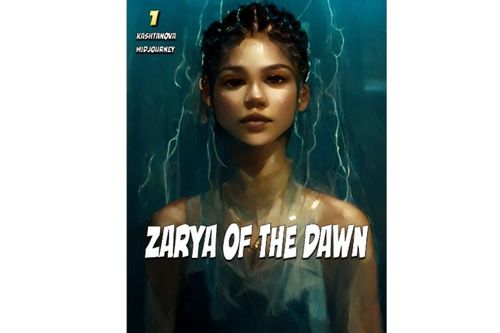Lawyers for the author argue that the use of Midjourney is akin to a photographer using Photoshop.

As the US Copyright Office moves to cancel protection for the AI-generated comic book Zarya of the Dawn, the mind behind it argues she’s the author of the entirety of the work, despite using Midjourney to generate images.
In a response to the Copyright Office’s notice for potential cancellation seen by AI Business, lawyers acting on behalf of Kristina Kashtanova detail that the text of the comic book was written entirely by Kashtanova “without the help of any other source or tool, including any generative AI program.”
Van Lindberg, a partner at the law firm Taylor English Duma, wrote the response, contending that Kashtanova had no reason to disclose information on the tools used to create the work. Lindberg likened it to photographers not disclosing the use of Photoshop to create or modify an image.
The response reads: “Kashtanova engaged in a creative, iterative process which she describes as ‘working with the computer to get closer and closer to what I wanted to express.’”
“This process included multiple rounds of composition, selection, arrangement, cropping, and editing for each image in the work. Her efforts make her the author of the work, including authorship of each image in the work. The computer programs she used, including the Midjourney image creation service, were but ‘an assisting instrument’ to Kashtanova.”
The comic book creator’s lawyers argue that accounts detailing her work “oversimplified” the creative process and “improperly characterized the role of the Midjourney service for dramatic effect.”
The legal team argues that Kashtanova took “over a year” to create the work, from conception to creation. Such length of time spent creating the work "makes it clear that it was not an unguided, ‘push-button’ process,” the legal response reads.
Kashtanova and her legal team contend that the entirety of the comic book reflects her authorship. However, should the Copyright Office take issue with that some individual images, the lawyers suggest the work is still registerable as a compilation under the U.S. Copyright Act.
The Copyright Act defines a compilation as "a work formed by the collection and assembling of preexisting materials or of data that are selected, coordinated, or arranged in such a way that the resulting work as a whole constitutes an original work of authorship."
Kashtanova’s lawyer argues that the definition “does not require that the materials used to create a compilation be themselves copyrightable.”
“Even under the most limited interpretation, the Midjourney-associated images used in the Work are ‘data.’ Kashtanova’s selection, coordination, and arrangement of those images to reflect the story of Zarya should, at a minimum, support the copyrightability of the work as a whole,” the response reads.
The lawyers representing Kashtanova argue that the registration of the disputed work is affirmed.
“Each and every part of the work was guided by her creative input and reflects her authorship,” their response reads.
“While Kashtanova used the Midjourney service to assist her in creating some of the images in the Work, the use of that tool does not diminish the human mind that conceived, created, selected, refined, cropped, positioned, framed and arranged all the different elements of the work into a story that reflects Kashtanova’s personal experience and artistic vision.”
Zarya of the Dawn: Background
The Copyright Office granted protection to Kashtanova for the comic book titled Zarya of the Dawn in September.
However, the Office since backtracked on its decision, moving to cancel the work’s protection. Upon a cancellation, Kashtanova was given a chance to respond. After initially facing the dispute alone, she enlisted the help of Van Lindberg, a lawyer specializing in open-source law. In a now-deleted Tweet, Kashtanova said that Midjourney offered to help in her appeal.
Confusion around intellectual property protections for AI generations has been around for several years — but has mostly found itself limited to patents and innovation protection, not visual artworks, most famously, in the case of DABUS.
Aside from the comic book, Kashtanova used Midjourney to generate stock images of a person that were acceptable to Adobe Stock.
Adobe announced at its Max conference last year that it was planning to embrace generative AI though nothing was said as to whether it would accept generated images on its stock images site.
About the Author(s)
You May Also Like


.jpg?width=700&auto=webp&quality=80&disable=upscale)
.jpg?width=700&auto=webp&quality=80&disable=upscale)
.jpg?width=700&auto=webp&quality=80&disable=upscale)



.jpg?width=300&auto=webp&quality=80&disable=upscale)
.jpg?width=300&auto=webp&quality=80&disable=upscale)